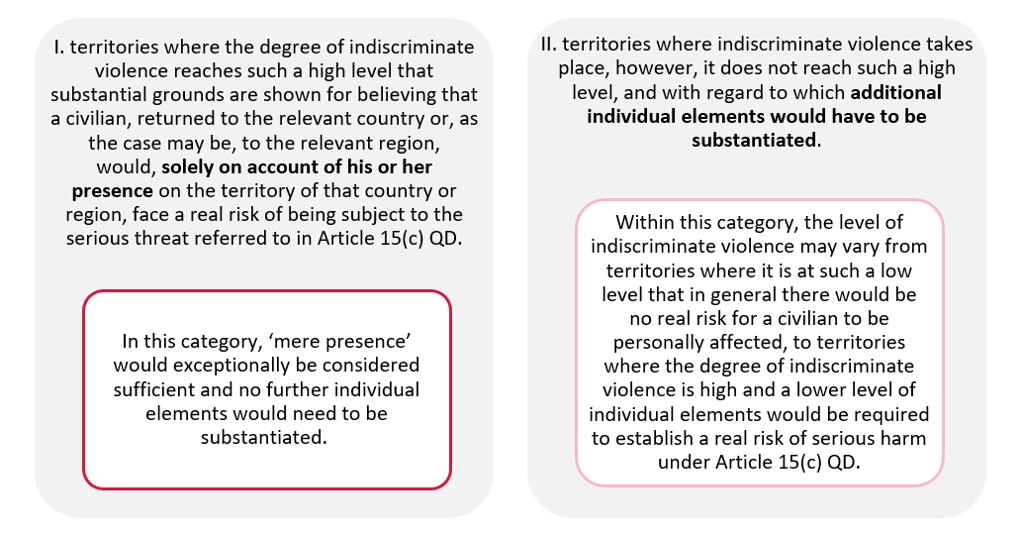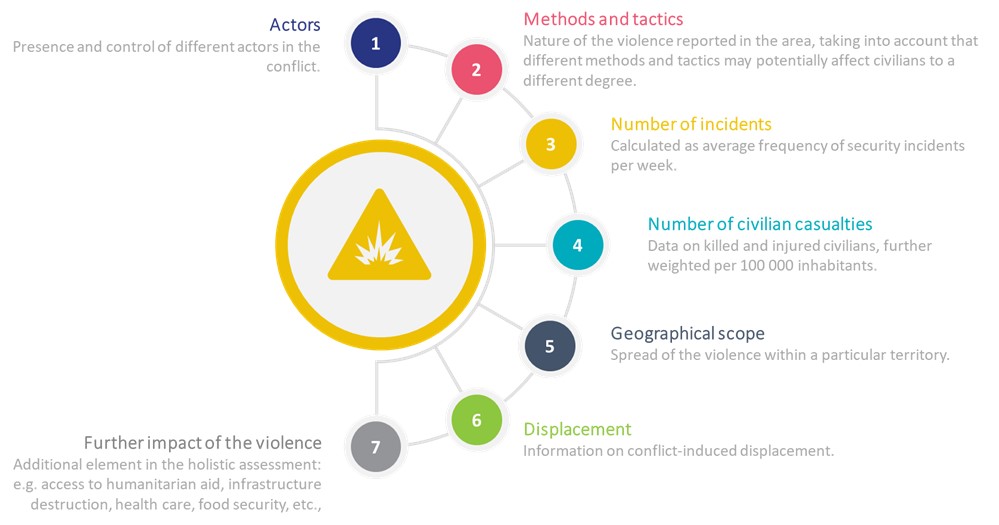‘Indiscriminate violence’ refers to the source of the specific type of serious harm defined in Article 15(c) QD. The CJEU in Elgafaji notes that the term ‘indiscriminate’ implies that the violence,
 |
|
[…] may extend to people irrespective of their personal circumstances.
CJEU, Elgafaji, para.34
|
Some acts of violence may be indiscriminate by their nature, for example: (suicide) bombings, attacks and armed confrontations in areas that are inhabited or frequented by civilians (e.g. marketplaces, public roads, healthcare facilities).
Based on Elgafaji, in situations where indiscriminate violence is taking place, the following differentiation can be made with regard to its level:
Figure 5. Levels of indiscriminate violence on the basis of CJEU, Elgafaji, para.43.

With regard to the second category (text box on the right), Elgafaji provides guidance on how the serious and individual threat has to be assessed, an approach commonly referred to as the ‘sliding scale’.
 |
|
[…] the more the applicant is able to show that he is specifically affected by reason of factors particular to his personal circumstances, the lower the level of indiscriminate violence required for him to be eligible for subsidiary protection.
CJEU, Elgafaji, para.39
|
See further guidance concerning some individual elements which may be of relevance in this assessment in the sub-section 3.3.4 Serious and individual threat.
 |
In armed conflicts the targeting of civilians may have nexus to one of the reasons for persecution according to the refugee definition. Therefore, refugee status may be granted as noted in the section above. See, for example, the profiles 2.1 Persons affiliated with the former Afghan government, 2.3 Religious leaders, 2.5 Educational personnel, 2.6 Healthcare professionals and humanitarian workers, including individuals working for national and international NGOs, 2.7 Journalists, media workers and human rights defenders, and 2.15 Ethnic and religious minorities. Such targeted violence, furthermore, would not be considered ‘indiscriminate’. |
The common analysis regarding the degree of indiscriminate violence combines quantitative and qualitative elements in a holistic and inclusive assessment. The indicators applied are formulated in reference to the ECtHR judgment in Sufi and Elmi:
 |
|
[…] first, whether the parties to the conflict were either employing methods and tactics of warfare which increased the risk of civilian casualties or directly targeting civilians; secondly, whether the use of such methods and/or tactics was widespread among the parties to the conflict; thirdly, whether the fighting was localised or widespread; and finally, the number of civilians killed, injured and displaced as a result of the fighting.
CJEU, Sufi and Elmi, para.241
|
These indicators have been further developed and adapted in the country guidance context, in order to be applied as a general approach to assessing the element of ‘indiscriminate violence’, irrespective of the country of origin in question. The security situation in the respective territories is assessed by taking into account the following elements:
Figure 6. Indicators in the assessment of the level of indiscriminate violence.

